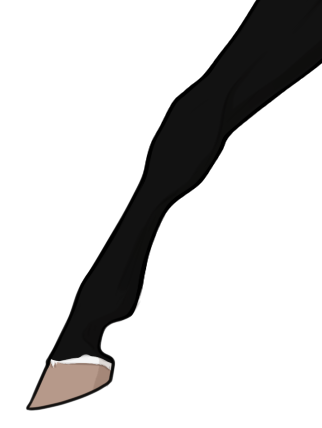Design Guide
Natural White
Category: Markings/Modifiers
Overview:
- Natural white markings may be applied to any horse, regardless of base color or additional genes.
- If a horse does not have any white pattern genes that cause extensive markings, they will be restricted within these limits.
- The image to the left shows the maximum bounds for natural white; click for fullsize.
- Face Maximum: Covers inner corner of the eye, stops at forehead, follows the line from eye corner to outer edge of nostril, wraps down chin.
- Leg Maximum: Reaches just below the knee/hock joint. May frame the bottom of the joint at most, but will not cross on to the joint itself.
Face Markings:
- Fairly smooth in appearance, and should not have overly jagged/irregular edges. Will have variance and tapering, but not excessively.
- Should be oriented vertically, not horizontally. Markings should not be wider than they are tall.
- Widest points tend to be at forehead and muzzle - markings on bridge of nose are typically thinner.
- Will not be split into more than 2-3 segments. Will not split into side-by-side pieces.
- The images below only represent a few examples and are not exhaustive!
Leg Markings:
- Must start from the hoof/coronet, filling upward. Will not originate from a different point on the leg.
- May have 1-2 small spots on the coronet band that cause striping on the hoof (must match where white covers).
- Should not be overly irregular/jagged, but may have one side reach slightly higher than the other.
- Small markings (i.e. on the heel) may hug one side, but shouldn't exceed the fetlock in height.
- Each leg is independent of the others; may be anywhere from none to max on each one.
- The images below only represent a few examples and are not exhaustive!
1 result found.












